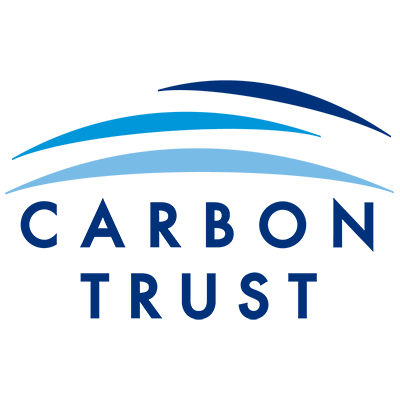Dynamic fall arrest system for offshore technician transfers
The Offshore Wind Accelerator (OWA) and the G+ Global Offshore Wind Health and Safety Organisation, and their offshore wind farm developer partners (the Challengers) are seeking a dynamic fall arrest system that understands the difference between a fall and normal movement from wave action. The winning business(es) in this competition will be given a commercial opportunity to deliver their solution to the, and receive support from the KTN, ORE Catapult and the wider InnovateUK network.
Opportunity
Challenge opens
07/10/2019
Challenge closes
20/12/2019
Benefit
The Challengers
The Offshore Wind Accelerator (OWA) is Carbon Trust's flagship collaborative RD&D programme. The initiative currently involves nine offshore wind developers; these OWA partners account for around 76% of Europe’s installed offshore wind capacity.
The G+ is the global health and safety organisation for the offshore wind industry, bringing together business leaders, health and safety experts and organisations operating in the offshore wind industry to drive good practice and promote world-class safety performance across the sector.
Background
The OWiX initiative is supporting the OWA and the G+ members in the offshore wind industry to identify transferable solutions to its innovation needs.
Offshore wind farms require regular maintenance teams to access each individual turbine to undertake routine inspection and maintenance activities, as well as unscheduled maintenance. Currently there are two types of approaches to transiting the technicians to turbines:
- Via smaller Crew Transfer Vessels (CTVs), typically for sites less than 30nmi (50km) from shore
- Via larger Service Operations Vessels (SOVs), typically for sites more than 30nmi from shore. SOVs can transfer using a gangway system fitted onto the vessel, or alternatively can launch a smaller vessel (a daughter craft) that transfers technicians to the turbine in a similar way to a CTV.
After either a CTV or a SOV daughter craft transits offshore to the turbine, the technicians transfer to the turbine.
The predominant industry methodology for CTV transfers is to use friction to reduce vessel motions to the turbine to enable transfers, referred to as push-on transfers. However, another approach is the sliding access transfer system, which is a method by which a vessel slides against a boat landing and the wave motion gives a more predictable moment of personnel transfer to/from offshore wind turbines. The OWA has conducted a study to provide a better understanding of the use of the sliding access transfer method in offshore wind. The UK HSE’s expectation to achieve legal compliance will be that a person is attached to a suitable fall arrest system prior to transferring on to the ladder and will when descending remain attached until transferred back onto the vessel. A dynamic fall arrest system that interprets the difference between 1) a fall and 2) normal movement from wave action is therefore required. The OWA and G+ are looking for a solution to this challenge.
A secondary benefit and interest for such a system would be to reduce the likelihood of a “hang-up” incident for push-on transfers if the vessel suddenly slips.


Figure 1 Side profile of a CTV accessing an offshore wind turbine with a sliding access methodology
Whilst not limiting the technologies from solution providers, it is expected that solutions would consider innovations from some of the following areas:
- Sensor systems
- Photonics
- Robotics and mechatronics
- Aerospace engineering and manufacturing
- High accuracy positioning systems
- Unmanned aerial vehicles (UAVs)
- Artificial intelligence
- Motion compensated or dynamic lifting technology
- Oil and Gas
To meet the desired timescale and risks, it is preferred that the proposed solution, or the key part(s) of the solution, has been commercially proven in other sectors or within a test program which includes offshore conditions trials.
Rewards and benefits
Successful applicants will be given an opportunity to pitch to the OWA and its nine offshore wind farm developer partners. The package may also include:
- Continued financial or advisory support from the OWA for chosen solutions
- Technical or commercial support from the Offshore Renewable Energy (ORE) Catapult or the KTN
- A place in KTN or ORE Catapult events
- A potential business collaboration
- The potential to attend a G+ Focal Group meeting and pitch solutions to customers
- Product feedback and letters of support from OWA developer partners
Solution Requirements
Functional Requirements
- The baseline “push-on” approach to technician transfers is to utilise the boatlanding docking poles on the turbine (either side of the access ladder), the vessel’s rubber bow fenders and forward propulsion to create friction and reduce movement so that the technician can transfer to the turbine ladders.
- The sliding access approach replaces the vessel’s high friction bow fender with a low-friction material. The fender is shaped in order to hold position between the turbine’s boat landings and not slide sideways. This sliding access system helps prevent movement in any dimension other than vertical. The vessel slides against the boat landing and the wave motion gives a more predictable moment of personnel transfer to/from offshore wind turbines. A solution should assume that this movement is relatively predictable but could be subject to sudden vertical movement.
- A technician must walk to the bow (front) of the vessel, watch the movement of the waves and then choose a time to make the transfer. The technician climbs up 3 steps and then clips a standard fall arrest system onto the turbine access ladder. The technician then climbs up to ten metres to a rest platform before ascending to the main platform at the turbine tower base. A solution should seek to keep the technician attached at all times during transfer from the vessel to the rest platform (and egressing from the rest platform to the vessel) and prevent (e.g. through measurement and a locking system) a fall into the water, while not creating a “hang-up” by restricting the motion of the technician while the vessel is moving due to expected (or unexpected) vertical movement.
- On continental European sites, it is currently acceptable practice for the technician to step over while not being attached to a fall arrest system. In the UK, the Health and Safety Executive’s (HSE) expectation to achieve legal compliance will be that a person is attached to a suitable fall arrest system prior to transferring on to the ladder. It also expects that while descending, a technician should remain attached until transferred back onto the vessel. A solution should seek to meet the HSE’s guidelines.
Technical Characteristics
- The distance from the waterline to the top of the transition piece platform is approximately 20m and the distance from the waterline to the first rest platform on the ladder is approximately 10m.
- A solution should either be a low cost system fixed onto the turbine or attached to the vessel (i.e. fewer devices per wind farm), in order to reduce device and installation costs. Fixed standard fall arrest systems are already attached to the turbine access ladder, underneath the rest platform down to the waterline. A typical system would be a Latchways fall arrest system.
- A solution should be as small and light as possible. For example, it should not weigh more than a person (e.g. 100kg) or take up more than one square metre of deck space.
- Sensors that are used to improve the fall arrest system must be able to detect the difference between a sudden fall of the technician and the standard wave motion related to a technician being aboard the vessel.
- CTVs typically have a:
- 15-24m length
- 2-3m freeboard
- 30-100 tonne displacement (weight)
- 10-20 tonne payload
- 4-15 tonne bollard push
- SOV daughter craft typically have a:
- 8-15m length
- 0.5-1.5m freeboard
- 8-15 tonne displacement (weight)
- 1-2 tonne payload
- 0.5-2 tonne bollard push
- 8-15m length
- SOV daughter craft have a lower level of thrust than CTVs due to their engine and propulsion size. Solutions should seek to be applicable to both types of vessel.
- A typical 500MW site closer than 27nm to shore may have 4-5 CTVs.
- A typical 500MW site more than 27nm from shore may have one SOV and 2 daughter craft, coupled with a supporting CTV.
- Maintenance of a solution should be minimal (e.g. annual is acceptable) and should be undertaken onshore, rather than offshore (e.g. switching out of system to undertake maintenance onshore).
Operating Conditions
- The device must be capable of working in offshore conditions with full weatherproofing, where off-the-shelf consumer electronics do not tend to withstand the harsh offshore conditions.
- Solutions must be able to be operated safely and reliably in offshore conditions of:
- Up to 12m/s wind speeds
- Significant wave heights (Hs) up to 2 metres (maximum wave height of approximately 4 metres)
- Ambient temperatures of -10C to +40C
- Solutions will be deployed in the splash and spray zone around the base of the turbine or the vessel.
Deployment Timescale
- Launch of the Competition: 07 October 2019
- Deadline for applications: 6th December 2019
- Selection and notification of finalists: 17th January 2020
- Solutions would ideally be:
- Fully deployable for prototype testing within 6-12 months of competition win.
- Fully commercially deployable within 18 months (there are operational sites that a solution could start work on immediately if the system is already commercially available).
Cost requirement and market opportunity
- Although there is a cost benefit in improving the speed of a transfer to the turbine and reducing vessel fuel consumption, the main focus of the challenge is to improve the safety of the sliding transfer.
- Current solutions must be installed on each turbine (as opposed to a vessel) and the standalone cost for each device is likely to be in the region of £8-12,000 per device, excluding installation costs which are likely to be double this. A solution ideally would significantly improve on this cost on a per wind farm basis. A more expensive system can be used if installed on a vessel (because there are far fewer vessels than turbines on a site, e.g. 6 CTVs for a 150-turbine nearshore site) but a cheaper system could be installed on a per turbine basis.
- As of 2018, there were 113 wind farms (representing 4,407 turbines) <30nmi (50km) from shore with approximately 220-280 CTVs operational on those sites. There were also 11 wind farms (representing 787 turbines) >27nm from shore, operating approximately 11 SOVs with 4 daughter craft and 15-25 CTVs.
- The market will also grow at a rate of 9% per year, with around 600 structures installed per until 2025.
Eligibility and assessment criteria
Entrants to this competition must be:
- Established businesses, startups, SMEs or individual entrepreneurs
- UK based or have the intention to set up a UK base
Applications will be assessed on:
- Relevance to the topic
- Innovative nature of the subject
- Coherence of the proposed business model
- Feasibility/ economic viability
- Development potential
- Maturity of project/solution
- Ability to launch project quickly/Ease of implementation
- Price/quality ratio
- Suitability for the UK and European Market
IP and Potential Commercial Route
- Existing background IP associated with a potential solution will remain with Solution Provider(s). Where any new IP generation is envisaged, it will be subject to the mutual IP agreement of the Solution Provider(s) and Innovation Challenger.
- Any commercial deployment of transferred solution or newly developed solution, through licensing, joint venture, partnership or direct investment, will be subject to the commercial agreement between the Solution Provider(s) and Innovation Challenger.
- Where necessary, a non-disclosure agreement (NDA) may be signed to uphold confidentiality in the engagement between the Solution Provider(s) and Innovation Challenger.
- Innovate UK and KTN do not take any share of IP ownership or enter into commercial venture through the iX programme.
This challenge is brought to you by:




